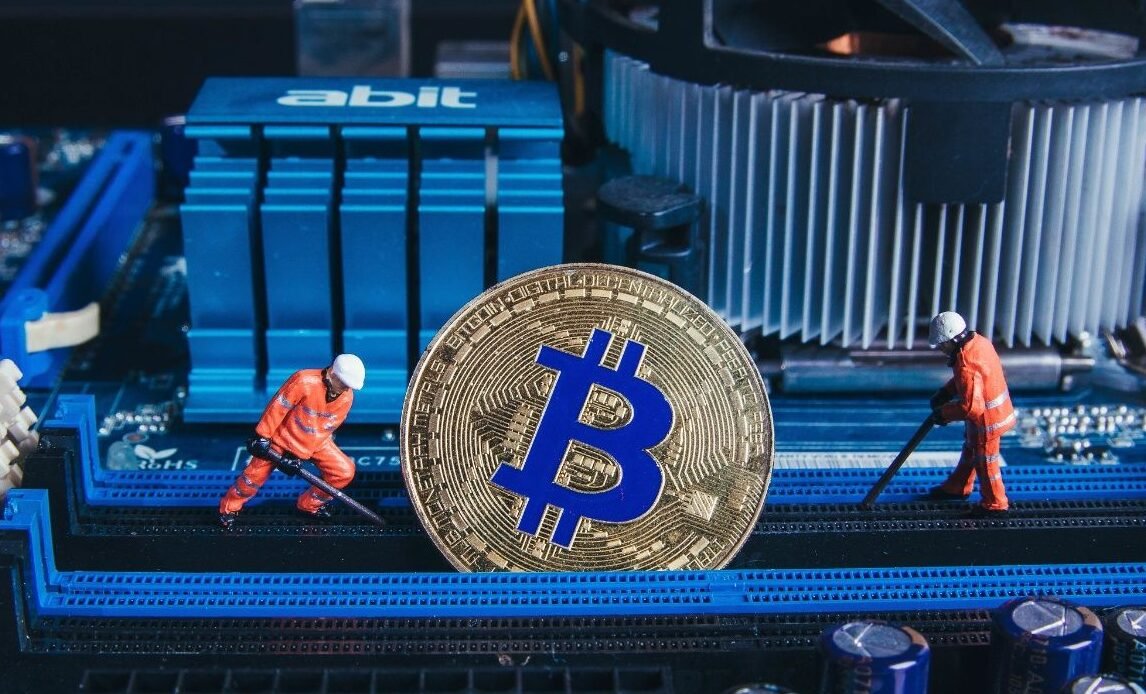Bitcoin mining continues to evolve rapidly, and finding the best ASIC miner for Bitcoin mining in 2025 has become crucial for miners seeking profitability in today’s competitive landscape. With the recent Bitcoin halving reducing block rewards to 3.125 BTC and mining difficulty reaching all-time highs, choosing the proper ASIC hardware can mean the difference between profit and loss.
This comprehensive guide analyzes the top ASIC miners available in 2025, comparing their hash rates, power efficiency, and return on investment to help you make an informed decision. Whether you’re a beginner entering the mining space or an experienced miner looking to upgrade your equipment, we’ll explore everything you need to know about selecting the most profitable Bitcoin mining hardware for 2025.
What Makes the Best ASIC Miner for Bitcoin Mining in 2025?
When evaluating ASIC miners for Bitcoin mining in 2025, several critical factors determine which device offers the best value and profitability. The mining landscape has become increasingly competitive, making efficiency and performance paramount to success.
Hash Rate Performance
Hash rate represents the computational power of your mining device, measured in terahashes per second (TH/s). Higher hash rates increase your chances of successfully mining Bitcoin blocks and earning rewards. Best ASIC Miner for Bitcoin Mining 2025 delivers hash rates ranging from 100 TH/s to over 200 TH/s, with some cutting-edge models pushing even higher.
Power Efficiency Matters Most
Power efficiency, measured in watts per terahash (W/TH), directly impacts your electricity costs and overall profitability. With electricity representing 60-80% of mining operational costs, choosing an energy-efficient ASIC miner is essential. The best miners in 2025 achieve power efficiency ratings below 20 W/TH, with premium models reaching as low as 15 W/TH.
Return on Investment Timeline
The payback period for your ASIC investment depends on several variables, including hardware cost, electricity rates, mining difficulty, and Bitcoin price. Top-performing miners in 2025 typically offer ROI periods between 8 and 18 months under favorable conditions.
Top 10 Best ASIC Miners for Bitcoin Mining 2025

After extensive research and analysis of current market offerings, here are the leading ASIC miners that deliver exceptional performance and profitability in 2025.
Antminer S21 Pro – The Efficiency Champion
The Antminer S21 Pro stands out as one of the most efficient Bitcoin miners available in 2025. With a hash rate of 234 TH/s and power consumption of just 3,510W, it achieves an impressive power efficiency of 15 W/TH.
Key Specifications:
- Hash Rate: 234 TH/s
- Power Consumption: 3,510W
- Power Efficiency: 15 W/TH
- Price Range: $4,500 – $5,200
- Estimated Daily Profit: $18-25 (at $0.10/kWh)
The S21 Pro’s advanced 5nm chip technology and optimized cooling system make it ideal for large-scale operations and miners with access to cheap electricity.
WhatsMiner M60S – Premium Performance
The WhatsMiner M60S delivers exceptional hash rate performance with 172 TH/s while maintaining reasonable power efficiency at 16.5 W/TH. This miner appeals to operations prioritizing high throughput.
Key Specifications:
- Hash Rate: 172 TH/s
- Power Consumption: 2,838W
- Power Efficiency: 16.5 W/TH
- Price Range: $3,800 – $4,300
- Estimated Daily Profit: $15-22 (at $0.10/kWh)
Antminer S19 XP – Proven Reliability
The S19 XP continues to be a popular choice among miners for its proven track record and solid performance metrics. With 140 TH/s and 21.5 W/TH efficiency, it offers a good balance of performance and cost.
Key Specifications:
- Hash Rate: 140 TH/s
- Power Consumption: 3,010W
- Power Efficiency: 21.5 W/TH
- Price Range: $2,800 – $3,400
- Estimated Daily Profit: $12-18 (at $0.10/kWh)
Canaan AvalonMiner 1466 – Budget-Friendly Option
For miners seeking entry-level pricing without sacrificing too much performance, the AvalonMiner 1466 provides 150 TH/s at competitive efficiency levels.
Key Specifications:
- Hash Rate: 150 TH/s
- Power Consumption: 3,420W
- Power Efficiency: 22.8 W/TH
- Price Range: $2,200 – $2,800
- Estimated Daily Profit: $10-16 (at $0.10/kWh)
Antminer S21 – Mainstream Choice
The standard S21 model offers excellent value for miners seeking current-generation technology at more accessible pricing than the Pro version.
Key Specifications:
- Hash Rate: 200 TH/s
- Power Consumption: 3,550W
- Power Efficiency: 17.8 W/TH
- Price Range: $3,200 – $3,800
- Estimated Daily Profit: $14-20 (at $0.10/kWh)
WhatsMiner M50S – Solid Mid-Range Option
The M50S provides reliable performance with 126 TH/s and maintains competitive efficiency for its price segment.
Key Specifications:
- Hash Rate: 126 TH/s
- Power Consumption: 3,276W
- Power Efficiency: 26 W/TH
- Price Range: $2,000 – $2,600
- Estimated Daily Profit: $8-14 (at $0.10/kWh)
Antminer S19j Pro+ – Proven Performer
This upgraded version of the popular S19j series delivers enhanced performance while maintaining the reliability miners have come to expect.
Key Specifications:
- Hash Rate: 122 TH/s
- Power Consumption: 3,355W
- Power Efficiency: 27.5 W/TH
- Price Range: $1,800 – $2,400
- Estimated Daily Profit: $7-13 (at $0.10/kWh)
Canaan AvalonMiner 1366 – Energy Efficient
The 1366 focuses on power efficiency, making it suitable for regions with higher electricity costs.
Key Specifications:
- Hash Rate: 130 TH/s
- Power Consumption: 3,196W
- Power Efficiency: 24.6 W/TH
- Price Range: $1,900 – $2,500
- Estimated Daily Profit: $8-14 (at $0.10/kWh)
Antminer T21 – Value Engineering
Designed for cost-conscious miners, the T21 provides decent performance at budget-friendly pricing.
Key Specifications:
- Hash Rate: 190 TH/s
- Power Consumption: 3,610W
- Power Efficiency: 19 W/TH
- Price Range: $2,400 – $3,000
- Estimated Daily Profit: $11-17 (at $0.10/kWh)
Also Read: The Future of Crypto Mining: Sustainability Trends for 2025
WhatsMiner M53S – Balanced Performance
The M53S rounds out our top 10 with a solid all-around performance suitable for various mining operations.
Key Specifications:
- Hash Rate: 226 TH/s
- Power Consumption: 4,434W
- Power Efficiency: 19.6 W/TH
- Price Range: $3,600 – $4,200
- Estimated Daily Profit: $13-19 (at $0.10/kWh)
Factors to Consider When Choosing Your Bitcoin Mining Hardware

Electricity Costs and Power Infrastructure
Your local electricity rate significantly impacts mining profitability. Miners in regions with rates above $0.15/kWh should prioritize the most efficient models to maintain profitability. Additionally, ensure your electrical infrastructure can handle the power requirements of industrial mining equipment.
Initial Investment and ROI Calculations
Calculate your expected return on investment based on current Bitcoin prices, mining difficulty, and operational costs. Use mining calculators to model different scenarios and choose hardware that aligns with your risk tolerance and investment timeline.
Noise and Heat Management
ASIC miners generate substantial noise (typically 70-80 decibels) and heat output. Consider your installation location and whether additional cooling or soundproofing investments are necessary.
Warranty and Support
Choose manufacturers offering comprehensive warranties and reliable customer support. Bitmain (Antminer), MicroBT (WhatsMiner), and Canaan all provide varying levels of warranty coverage and technical support.
Mining Pool Selection and Setup Considerations
Popular Mining Pools for ASIC Miners
Joining a mining pool increases your chances of earning consistent Bitcoin rewards. Popular pools include:
- F2Pool: One of the largest pools with 2% fees
- Antpool: Bitmain’s official pool with competitive rates
- Slush Pool: The first Bitcoin mining pool with transparent operations
- ViaBTC: Offers multiple payout methods and low fees
Pool Fees and Payout Methods
Most mining pools charge fees between 1-3% of your earnings. Compare payout methods (PPS, PPLNS, SOLO) to find the structure that best matches your mining goals and risk preferences.
Profitability Analysis and Market Outlook
Current Bitcoin Mining Economics
With Bitcoin trading around $60,000-70,000 in 2025 and mining difficulty continuing to rise, only the most efficient ASIC miners remain profitable for retail miners. Industrial operations with access to electricity below $0.05/kWh maintain healthy margins across a broader range of hardware.
Future-Proofing Your Mining Investment
Consider the longevity of your chosen ASIC miner. Models with superior power efficiency will remain profitable longer as mining difficulty increases and older, less efficient miners become obsolete.
Market Trends and Technology Developments
The ASIC manufacturing industry continues advancing toward more efficient chip designs. Next-generation 3nm and 2nm process nodes promise even better power efficiency, though these improvements come at a premium price.
Environmental Considerations and Sustainable Mining
Renewable Energy Integration
Many large-scale mining operations are transitioning to renewable energy sources to reduce environmental impact and achieve lower electricity costs. Solar, wind, and hydroelectric power can significantly improve mining economics while supporting sustainability goals.
Carbon Footprint Reduction
Modern ASIC miners consume less energy per hash than previous generations, improving the overall carbon efficiency of Bitcoin mining. Choosing the most efficient hardware available contributes to reducing the network’s environmental impact.
Investment Strategies for Different Miner Types
Home Mining Setups
Home miners should prioritize quieter models with lower power consumption to avoid electrical system overload and noise complaints. The Antminer S19 XP or WhatsMiner M50S work well for residential installations.
Small Commercial Operations
Small commercial miners benefit from focusing on the best price-to-performance ratio. The Antminer S21 and Canaan AvalonMiner 1466 offer excellent value for growing operations.
Industrial Mining Farms
Large-scale operations should prioritize the most efficient models available, as even small efficiency gains multiply across hundreds or thousands of units. The Antminer S21 Pro and WhatsMiner M60S lead in this category.
Maintenance and Operational Tips
Regular Maintenance Schedule
Establish a routine maintenance schedule including:
- Monthly dust cleaning of fans and heat sinks
- Quarterly thermal paste replacement
- Annual fan replacement or servicing
- Continuous monitoring of temperatures and hash rates
Troubleshooting Common Issues
Common ASIC miner problems include overheating, hash rate degradation, and connectivity issues. Maintain spare fans, power supplies, and networking equipment to minimize downtime.
Monitoring and Management Software
Use mining management software to monitor your ASIC fleet remotely. Popular options include:
- Awesome Miner: Comprehensive management for multiple miner types
- Hive OS: Cloud-based monitoring and management
- MinerStat: Real-time tracking with mobile apps
Conclusion
Selecting the best ASIC miner for Bitcoin mining in 2025 requires careful consideration of hash rate, power efficiency, initial investment, and your specific operational constraints. The Antminer S21 Pro leads our recommendations for maximum efficiency, while the WhatsMiner M60S excels in raw hash rate performance. Budget-conscious miners should consider the Canaan AvalonMiner 1466 or Antminer S19 XP for solid value propositions.
Success in Bitcoin mining depends not only on choosing the right hardware but also on securing affordable electricity, proper infrastructure planning, and ongoing operational optimization. As mining difficulty continues rising and competition intensifies, only the most efficient operations will maintain profitability.
